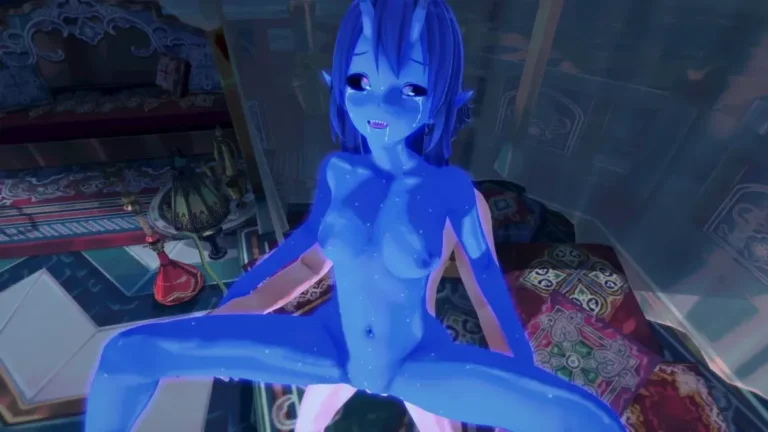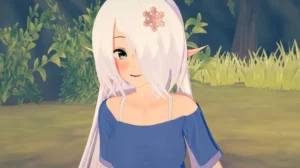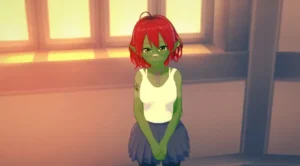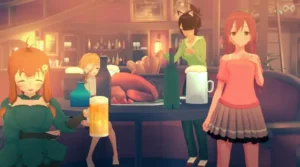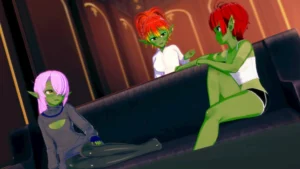
Tales of Unity
Play Tales of Unity
Tales of Unity review
Exploring the Story, Characters, and Gameplay of Tales of Unity
Tales of Unity is a standout title in its genre, known for its compelling storytelling, rich characters, and engaging gameplay. This game has earned praise for blending narrative depth with interactive elements, creating an experience that resonates with players. Whether you’re new to Tales of Unity or looking to deepen your understanding, this article will guide you through its key features and what makes it a memorable experience.
Exploring the Story and Characters of Tales of Unity
What Makes the Story Engaging?
Let me tell you about the first time the Tales of Unity story truly hooked me. I was a few hours in, thinking I had the plot all figured out—a classic “band of heroes saves the world” tale. Then, bam! A major twist recontextualized everything I thought I knew about the world of Aethel. 🤯 That’s the magic of this game’s narrative; it respects your intelligence while constantly keeping you on your toes. The Tales of Unity narrative isn’t just a backdrop for the action; it’s the driving force, a living, breathing entity that evolves with your journey.
So, what’s the secret sauce? It’s the perfect blend of high-stakes world-building and intimate, personal moments. You’re not just saving the world from a vague, existential threat; you’re fighting for the specific people you meet in each village, for the friendships you build within your party. The central conflict of the Tales of Unity story revolves around the concept of “Resonance”—the idea that all living things are connected by a fragile energy field. This isn’t just a cool magic system; it’s a narrative device that ties every character’s motivation and every plot point directly to the game’s core theme. 💫 The game constantly poses difficult moral questions, making you, the player, truly feel the weight of your choices.
The pacing is another masterstroke. It knows exactly when to hit you with a tense, action-packed sequence and when to pull back for a quiet, character-driven scene around a campfire. This rhythmic flow prevents story fatigue and makes the world feel authentic. You get to experience the lulls and the storms of a real adventure. The Tales of Unity storytelling excels at making you care about the fate of its world by showing you, not just telling you, what’s at stake. It’s a prime example of how to craft an immersive game narrative that players remember long after the credits roll.
Character Development and Depth
If the world of Aethel is the body of the game, then the Tales of Unity characters are its beating heart. 🫀 This isn’t an ensemble of generic archetypes; each party member is a fully realized individual with a complex past, conflicting desires, and personal demons to conquer. The character development in Tales of Unity is some of the most rewarding I’ve experienced, unfolding organically through both main story beats and optional, heartfelt interactions.
Let’s take Kaelen, the brooding swordsman with a secret. At first glance, he’s the typical quiet hero. But as you progress, his layers are peeled back through “Bonding Moments”—optional side stories that you unlock by having characters fight together. I’ll never forget the one where he finally opens up about his guilt over a past failure, not in a dramatic cutscene, but while quietly sharpening his blade at camp. It was a raw, human moment that completely changed my perception of him. This is the genius of the game’s design: the character development in Tales of Unity is often earned, not just given. 🎭
The game’s cast is a beautiful mosaic of personalities:
- Elara, the optimistic mage, whose cheerful exterior hides a deep-seated fear of her own immense power.
- Roric, the grizzled veteran, who provides gruff wisdom but struggles with the changing world he fought to protect.
- Fie, the nimble thief, whose loyalty is constantly tested between her newfound friends and her old, shady connections.
Their inter-party banter is legendary. They don’t just exist in a vacuum; they form relationships, have disagreements, share inside jokes, and support each other’s growth. This dynamic web of interactions makes the party feel like a real found family, and your investment in them directly fuels your investment in the overall Tales of Unity story.
I once spent an hour just listening to my party members debate the ethics of using ancient magic. It didn’t advance the plot, but it deepened my connection to them immeasurably. That’s the mark of great writing.
Humor and Narrative Style
Now, let’s talk about one of the most delightful aspects of the experience: the Tales of Unity humor. 😂 In a genre often bogged down by its own seriousness, this game understands that laughter is a vital part of the human experience, even during an apocalypse. The Tales of Unity narrative skillfully weaves comedy into its fabric without ever undermining the gravity of its central plot.
The humor isn’t delivered through slapstick or fourth-wall-breaking gags (well, maybe one or two from a certain mischievous character). Instead, it’s character-driven and situational. It’s the way the stoic Kaelen gets flustered by Elara’s relentless optimism. It’s Roric’s deadpan, world-weary reactions to Fie’s chaotic schemes. The Tales of Unity humor feels authentic because it stems from the clashing and meshing of these well-defined personalities you’ve grown to love. It makes the world feel lived-in and real. 🎪
This balanced tone is a key component of the Tales of Unity storytelling technique. By allowing for moments of levity, the game makes the dramatic and emotional beats hit that much harder. You laugh with these characters during the good times, which makes you truly fear for them during the bad times. The game never lets you forget the stakes, but it also reminds you what you’re fighting for—the joy, the friendship, and the silly moments in between. This creates a powerful emotional resonance that is far more effective than a purely grimdark approach.
To give you a clearer picture of how these narrative elements work together, here’s a breakdown of a few key characters and their narrative roles:
| Character | Initial Archetype | Core Internal Conflict | Role in the Narrative |
|---|---|---|---|
| Kaelen | The Lone Wolf | Duty vs. Personal Redemption | Embodies the theme of bearing guilt and learning to trust again. |
| Elara | The Energetic Apprentice | Innocence vs. Burgeoning Power | Represents hope and the moral questions surrounding great power. |
| Roric | The Grizzled Veteran | Tradition vs. Progress | Provides historical context and the wisdom of past failures. |
Ultimately, the story and characters of Tales of Unity work in perfect harmony. The compelling Tales of Unity story provides the stage, and the deep, humorous, and evolving Tales of Unity characters are the unforgettable actors upon it. It’s a masterclass in how to create an engaging game story that feels both epic in scope and intimately personal, leaving a lasting impression that will have you thinking about Aethel and its inhabitants for a long time to come. ✨
Tales of Unity offers a rich blend of storytelling, character depth, and engaging gameplay that sets it apart in its category. Its unique narrative style and well-developed characters create an immersive experience that resonates with players. Whether you’re drawn by the story or the gameplay, Tales of Unity provides a memorable journey worth exploring. Dive in and discover what makes this game a standout title.
